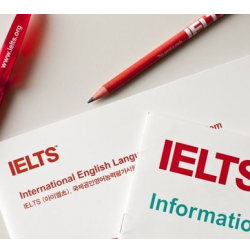Vocabulary and Autonomy

۱۷ اردیبهشت ۱۳۹۷
Vocabulary and Autonomy
The general aim is to involve the students in a more autonomous fashion in their learning, rather than simply having them presented with word lists selected by the teacher or syllabus.
- The role of vocabulary teaching
- How can teachers help their learners?
- Self-initiated independent learning
- Formal practice
- Functional practice
- Memorizing
- Best approach
- Practical activities
- References
The role of vocabulary teaching
In the context of learning English as a foreign language, a learner is forced to be autonomous and independent and make conscious effort to learn vocabulary outside the classroom simply because the exposure to the target language is limited in class. So teachers cannot rely on their Ss 'picking up' lexical items. This makes explicit vocabulary teaching necessary. However, vocabulary is notoriously difficult if not impossible to teach because of the complexity of its linguistic, semantic and psycho-cognitive aspects.
How can teachers help their learners?
First of all, ways of presenting new vocabulary should be varied. In order to improve the efficiency of vocabulary learning (memorizing and retrieving lexical items) students should be encouraged to make use of learning strategies that are at their disposal, and be taught, either implicitly or explicitly, new strategies for vocabulary learning. According to one research (Pavicic, 1999) strategies can be divided into four groups
Self-initiated independent learning
These strategies involve planned, active and motivated learning and exposure to language outside the classroom (media).
Examples of strategies
- Word grouping
- Making notes of vocabulary while reading for pleasure/watching TV
- Word cards / Leafing through a dictionary
- Planning
- Recording and listening
- Regular revision
In this group cognitive strategies which include direct manipulation of lexical items are connected to meta-cognitive strategies that make the use of cognitive ones more effective. The aim is communicative use of vocabulary.
Formal practice
These strategies promote systematic learning and vocabulary practice. The aim is accurate reproduction and is often connected to the tasks of formal instruction.
Examples of strategies
- Loud repetition
- Bilingual dictionary
- Testing oneself
- Noting new items in class.
Functional practice
These strategies are based on context as a vocabulary source. They also include exposure to language, but without making a conscious effort (incidental learning). They also have a social aspect, i.e. interaction.
Examples of strategies
- Remembering words while watching TV/reading
- Using known words in different contexts
- Looking for definitions
- Listening to songs and trying to understand
- Using words in conversations
- Practice with friends.
Memorizing
This group includes a number of memory strategies based on inter-, intra-lingual and visual associations.
Examples of strategies
- Using pictures, illustrations
- Associations with L1 (cognates or key word method)
- Looking for similarities between words
- Visualisation
Best approach
There are no universally useful strategies and they contribute to vocabulary learning in different ways. Students use a number of strategies, often simultaneously. The efficiency of vocabulary learning depends on how students combine individual strategies. If students combine and employ individual strategies from different groups they will be more successful in developing the target language lexicon. Thus, the ideal combination would be that of strategies from all four groups.
The teacher should create activities and tasks (to be done both in and outside class) to help students to build their vocabulary and develop strategies to learn the vocabulary on their own. Students experiment and evaluate and then decide which to adopt or reject since strategies are not intended to be prescriptive.
Practical activities
Here is a selection of practical activities that direct learners towards using strategies of vocabulary learning.
The useful alphabet (self-initiated independent learning)
Each student gets a letter and has to find 5, 10 or 15 words s/he thinks would be useful for them. They then report to the class, perhaps as a mingle activity, using word cards (on one side they write the letter, on the other the information on the word - spelling, pronunciation, definition).
Word bag (formal practice)
This is to get your students to write down new words they hear in class.
At the beginning of the term/course divide students into groups of about 5 and give each group a number (e.g. 1-6). At the beginning of each class give each group about 10 cards on which they write the number of their group and the new words they hear in class. At the end of each class they put their cards into the "word bag" and every 2 weeks you check whether they still know those words and which group has the most cards. In the end there are two winners: the group that has the most cards, and the one that knows more words.
Especially for you (functional practice)
The teacher prepares a list of words. Each student gets one word which is prepared especially for him or her. The trick is that each student gets a word whose initial letter is the same as the initial of the student's first name, e.g. Linda gets listless. Each student must look it up in the dictionary during the class and after a few minutes report to the class. E.g. "My name is Linda and I'm listless. That means that I am ... (definition)...". For homework students can do the same using their surname.
Word tour (memorizing)
Instructions for your students: 'Think of a town or city you know well. Imagine that you are organising a sightseeing tour. Think of 5 places you would include on your tour and write down the order in which the tourists would visit them. Learn your tour off by heart so that you can picture it in your mind. Whenever you have 5 new English words to learn, imagine these words are the tourists on your tour and picture the words in the places on your tour like this. Tour: Trafalgar Square; Buckingham Palace; Houses of Parliament; Westminster Abbey; Downing Street. Words to learn: apron; dustpan; vacuum cleaner; feather duster; broom. Imagine Nelson on his column in Trafalgar Square wearing an apron, the queen brushing the floor in Buckingham Palace and using a dustpan...
Literature reference
Ellis, G., B. Sinclair (1989a) Learning to Learn English: A Course in Learner Training (Student book). Cambridge: Cambridge University Press.
Ellis, G., B. Sinclair (1989b) Learning to Learn English: A Course in Learner Training (Teacher's Book). Cambridge: Cambridge University Press.
French Allen, Virginia (1983) Techniques in Teaching Vocabulary. Oxford: OUP.
Gairns, Ruth and Stuart Redman (1990) Working With Words: A Guide toTeaching and Learning Vocabulary. Cambridge: CUP.
Morgan, Rinvolucri (1993) Vocabulary. Oxford: OUP.
Pavicic, Visnja (1999) Strategije ucenja engleskog kao stranog jezika /Learning Strategies in English as a Foreign Language/ [unpublished master thesis] University of Zagreb.
Wordflo Your Personal English Organiser . Longman, 1998.
Wright, Jon (1998) Dictionaries. Oxford: OUP.
Visnja Pavicic, MA, Pedagoski fakultet [Faculty of Education], University of Osijek, Croatia
Source: https://www.teachingenglish.org.uk/article/vocabulary-autonomy


